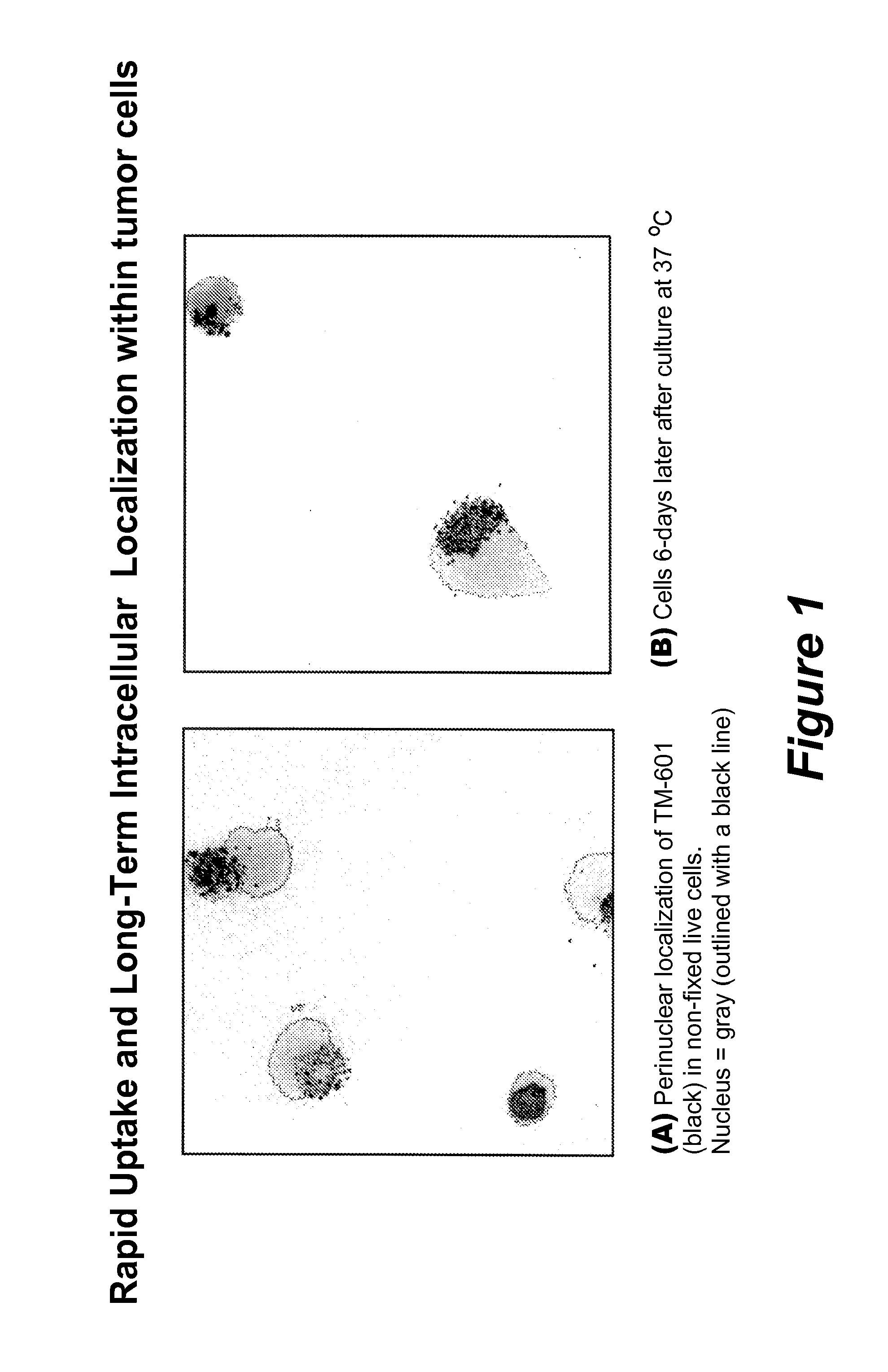Chlorotoxins as drug carriers
- Summary
- Abstract
- Description
- Claims
- Application Information
AI Technical Summary
Benefits of technology
Problems solved by technology
Method used
Image
Examples
example 1
Rapid Uptake and Long-Term Intracellular Localization of TM-601 within Tumor Cells
[0168]The present example demonstrates the uptake of TM-601 into cancer cells and its stability after uptake. A human glioblastoma cell line, U373, was cultured and stained without fixation for TM-601 uptake by adding to the culture media a fluorescently-tagged TM-601 molecule (labeled in green in FIG. 1). After 24 hours, the media was removed and the cells washed repeatedly to remove residual fluorescently tagged TM-601. For reference, the nucleus was stained with 4′,6-diamidino-2-phenylindole, dihydrochloride (DAPI) (blue) and the photograph in FIG. 1A was taken with a confocal microscope. The cells were then placed in media and cultured at 37° C. for an additional 6 days and the second photograph (FIG. 1B) was taken. The results show that the fluorescently tagged TM-601 that entered the cells during the 24 hour treatment, remained within viable cells for up to 6 days.
Other Embodiments
[0169]Other emb...
PUM
| Property | Measurement | Unit |
|---|---|---|
| Fraction | aaaaa | aaaaa |
| Therapeutic | aaaaa | aaaaa |
| Water solubility | aaaaa | aaaaa |
Abstract
Description
Claims
Application Information
 Login to View More
Login to View More - R&D
- Intellectual Property
- Life Sciences
- Materials
- Tech Scout
- Unparalleled Data Quality
- Higher Quality Content
- 60% Fewer Hallucinations
Browse by: Latest US Patents, China's latest patents, Technical Efficacy Thesaurus, Application Domain, Technology Topic, Popular Technical Reports.
© 2025 PatSnap. All rights reserved.Legal|Privacy policy|Modern Slavery Act Transparency Statement|Sitemap|About US| Contact US: help@patsnap.com

